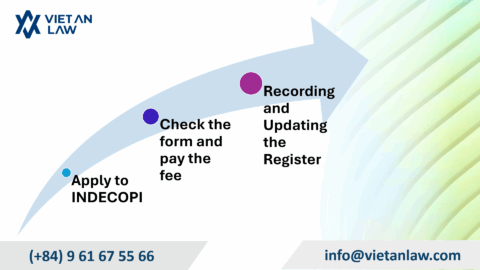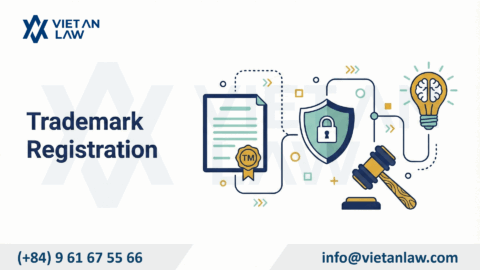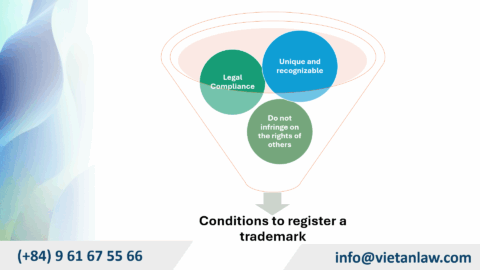In a context where industries are reshaping global standards with the continuous development of intellectual property, legal experts have analyzed how countries are adjusting their intellectual property legal frameworks to keep pace with digital innovations, sustainability, and economic uncertainties. In the article below, Viet An Law will summarize the notable intellectual property rights trends for 2025, including intellectual property protection strategies, regulatory challenges, and proactive legal reforms.
Table of contents
In 2025, intellectual property law worldwide faces unprecedented changes due to the rapid development of new technologies and emerging industries. As artificial intelligence, blockchain, and the metaverse continue to evolve, issues related to ownership rights and protection of digital assets, data, and innovations are becoming increasingly complex.
Simultaneously, the global race to adopt sustainable solutions and green technologies is creating new challenges for intellectual property frameworks, particularly in managing the intersection between environmental objectives and proprietary innovation. Legal systems worldwide are revisiting their intellectual property laws to address these growing issues, ensuring that legal protections keep pace with technological and industrial advancements.
New Zealand is witnessing continuous growth in several emerging industries such as agricultural technology, renewable energy, digital technology, and biotechnology, with a focus on health, environment, and food security advancements. Meanwhile, the digital technology sector will drive the most significant changes in New Zealand’s intellectual property law. This is due to rapid innovation in software, artificial intelligence, and digital content, as New Zealand has seen its current intellectual property framework struggling to keep pace with new challenges, such as protecting AI-generated works, software innovation protection, and data ownership rights.
In Thailand, artificial intelligence and innovations in environmental, social, and governance (ESG) are predicted to drive significant changes in the intellectual property landscape. With AI rapidly transforming industries through the creation of new technologies and content, challenges have emerged surrounding intellectual property ownership and protection, especially as Thai laws were written considerably before the deployment of generative AI. Determining whether AI systems or their developers possess intellectual property protection is currently a major legal gap.
From an ESG perspective, the increasing focus on sustainability has encouraged the development of green technologies, thereby creating new intellectual property. Additionally, there is potential for ESG-related innovations to exceed current legal frameworks to encourage more innovation in this field.
Intellectual property development trends in China share similarities with Thailand, yet possess distinctive characteristics related to national strategy. In this country, AI is predicted to have a profound influence on the intellectual property legal landscape. Notably, from a regulatory and legislative perspective, China’s Next Generation Artificial Intelligence Development Plan issued in 2017 outlines a clear roadmap, projecting that by 2025, China will complete the establishment of an initial legal and regulatory framework for AI, develop a system of ethical norms and related policies, and enhance AI security assessment and control capabilities. This reflects China’s comprehensive strategy in developing a legal framework that advances in parallel with technological progress in the AI sector.
AI-generated content particularly challenges traditional concepts of authorship and ownership rights, necessitating new guidelines for copyright and patent eligibility. This may lead to reforms in intellectual property law to clarify how AI-generated works are protected. Additionally, as digital content continues to expand, there will be an increasing focus on combating copyright infringement and unauthorized use of digital assets. Enforcement strategies may increasingly leverage technology, such as AI tools, to monitor and detect online intellectual property violations.
In China, domestic and foreign companies will continue to file more patents related to the full layout of the IT technology stack in AI, including core chips, frameworks, models, and application technologies.
The increase in patent applications will focus on areas of renewable energy, waste reduction, and environmentally friendly solutions – patents for green technologies.
It is predicted that by 2025, we may observe a trend of increasing patent applications for green technologies in China. On the one hand, China has implemented a priority examination system for energy-saving and environmental protection technologies. According to the Patent Priority Examination Administration Measures issued by the China National Intellectual Property Administration (CNIPA), patent applications or patent re-examination cases related to energy conservation, environmental protection, and other key national development industries may request expedited examination.
According to the Global Green Low-Carbon Technology Patent Statistical Analysis Report (2023) published by CNIPA for the period 2016-2022, China’s granted patents for green low-carbon technology accounted for 36.8% of the global total, with an average annual growth rate of 9.3%. In contrast, other countries and regions outside China have experienced negative growth.
Addressing cross-border intellectual property challenges through various initiatives and strategies aimed at protecting domestic intellectual property rights while operating in compliance with international standards is crucial.
For instance, in Thailand, authorities are working to modernize intellectual property laws and regularly seek to update them in accordance with international agreements, such as becoming a signatory to the TRIPS agreement to establish global minimum standards for intellectual property protection.
Similarly, in China, the “Guidelines on Optimizing the Foreign Investment Environment and Strengthening Efforts to Attract Foreign Investment” issued by China in August 2023 stipulates that administrative protection and enforcement of intellectual property rights for foreign individuals/companies need to be emphasized. Notably, the patent examination period in China has been reduced to 15.7 months, creating a competitive advantage compared to other major patent offices worldwide. The aforementioned guidelines have integrated global best practices into China’s processes, including an updated calculation method for patent term adjustments and the possibility of employing a dual filing strategy.
To strengthen intellectual property protection capabilities in 2025, businesses should prioritize innovations related to digital technology and AI, while effectively protecting green technology initiatives and securing cross-border intellectual property rights in strategic markets. Regular updates on intellectual property laws, especially in the field of digital content and software, are key factors. Businesses should develop licensing and collaboration models to optimize the value of their intellectual assets.
Intellectual property rights holders need to focus on registration and enforcement of rights in the digital space while proactively monitoring legal developments regarding AI. Building intellectual property commercialization strategies in technology, green technology, and manufacturing sectors will effectively support market expansion processes.
The above information regarding intellectual property rights trends for 2025 has been compiled by Viet An Law. For assistance with global intellectual property protection services, please contact Viet An Law. Respectfully!




